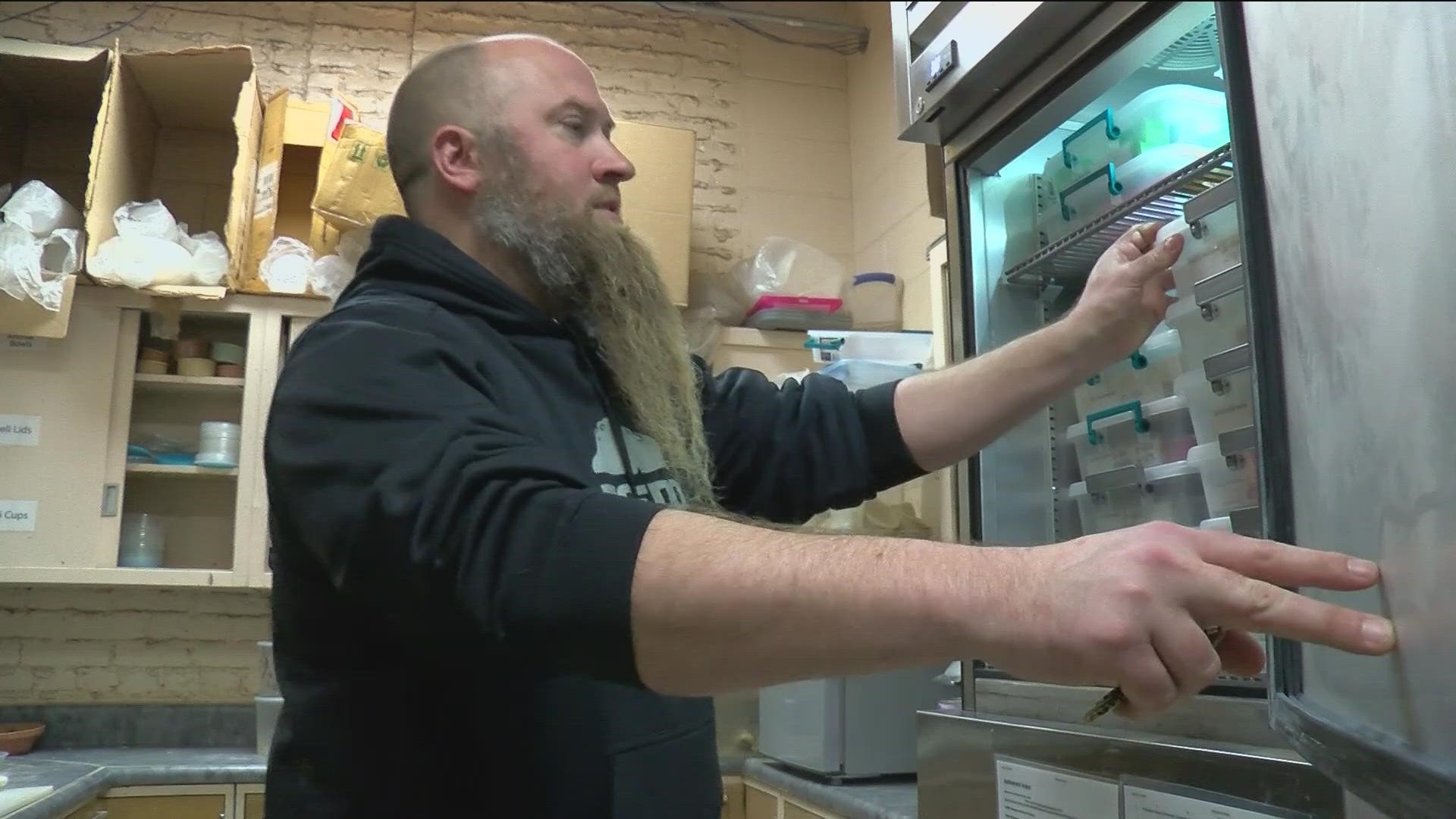TOLEDO, Ohio — On more than one occasion, John Chastain has rushed to work at the Toledo Zoo in the middle of the night to pass off antivenom to a first responder tasked with getting it to a medical facility.
"I'm not saying this was that but a lot of these bites do occur in the early hours of the morning. A lot of times they tend to involve alcohol and bad decisions," Chastain said. "That's when that stuff happens. It's never at lunchtime when I'm sitting in my office eating my lunch or whatever. Never a convenient time."
The latest instance was last October. Chastain said he got a call from Indiana poison control, requesting antivenom for a patient who'd been bitten. There's a good reason why the Toledo Zoo got the call; it has one of the largest antivenom inventories in the U.S.
"Here at the zoo we have a very large reptile and amphibian collection. Reptiles alone we have 150 species, with 60 of those actually being venomous," Chastain said.
Chastain is the general curator of ectotherms, or cold-blooded animals, at the Toledo Zoo. He's responsible for registering the zoo's list of antivenom to a nationwide database.
He said for the safety of the keepers, the zoo stocks antivenom for each of the venomous species in the collection. It's expensive, though. Chastain said one vial can sometimes cost thousands of dollars.
"We don't keep it as a public service. However during times of emergency, we try to help out where we can," Chastain said.
Chastain said the patient in Indiana was bitten by a saw-scaled viper, which is an exotic species from northern Africa. It can be dangerous without treatment.
"It does cause internal bleeding and hemorrhaging, so without treatment, there's a good chance you could succumb to the bite of this animal," Chastain said.
Luckily, the patient had a full recovery, Chastain said.
First responders transported the antivenom hundreds of miles. A police officer would take the vial, drive for a while and hand it off to another officer, a firefighter or another first responder. That chain was continued until the vial arrived at its destination, Indiana University Health.
Having worked with reptiles for more than 20 years, Chastain and his colleagues have a healthy respect for the animals and he discourages people from keeping them as pets.
"Aside from harming yourself, you could be harming others," Chastain said.
Nowadays, Chastain said he can't guarantee people won't come across venomous snakes in northwest Ohio.
"People have them as pets and either let them go or they escape," Chastain said.
As far as coming across one in the wild, he said it's not an immediate cause for concern.
"There's nothing really to be concerned about," Chastain said. "We do have Eastern Hognose snakes around here, especially at Wildwood. They have a decent population of them. Those are mildly venomous, however, they tend to not be an issue for people."

